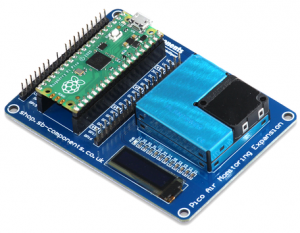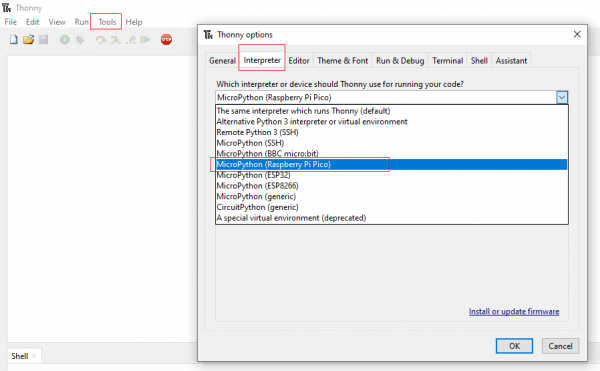Difference between revisions of "Pico-Air-Monitoring"
From SB-Components Wiki
| Line 1: | Line 1: | ||
<div class="row"> | <div class="row"> | ||
<div class="large-8 column"> | <div class="large-8 column"> | ||
| − | == Pico | + | == Pico Air Monitoring Expansion == |
=== Features === | === Features === | ||
| Line 11: | Line 11: | ||
</div> | </div> | ||
<div class="large-4 column"> | <div class="large-4 column"> | ||
| − | [[File: | + | [[File:Pico_air_monitoring.png|thumb|left|alt=Pico Air Monitoring Expasion| Buy it From : ''[https://shop.sb-components.co.uk/products/pico-air-monitoring-expansion Click Here]'']] |
</div> | </div> | ||
</div> | </div> | ||
| Line 20: | Line 20: | ||
== Installation == | == Installation == | ||
==== MicroPython ==== | ==== MicroPython ==== | ||
| − | * Stack Raspberry Pi Pico on female header of Pico Air Monitoring Expansion. | + | * Stack Raspberry Pi Pico on the female header of Pico Air Monitoring Expansion. |
| − | + | * Connect USB cable on Raspberry Pi Pico USB port. | |
| − | + | * Choose interpreter as MicroPython (Raspberry Pi pico). | |
[[File:Thonny-interpreter.PNG|600px]] | [[File:Thonny-interpreter.PNG|600px]] | ||
* Download Pico air monitoring expansion repository from the below link: | * Download Pico air monitoring expansion repository from the below link: | ||
Revision as of 10:18, 29 October 2021
Pico Air Monitoring Expansion
Features
Specifications

Buy it From : Click Here
Pinout
Installation
MicroPython
- Stack Raspberry Pi Pico on the female header of Pico Air Monitoring Expansion.
- Connect USB cable on Raspberry Pi Pico USB port.
- Choose interpreter as MicroPython (Raspberry Pi pico).
- Download Pico air monitoring expansion repository from the below link:
Source code: https://github.com/sbcshop/Pico-Air-Monitoring-Expansion
- open Thonny IDE and create 2 new files as ssd1306.py and pmsa003.py with the same content of the file you have downloaded from the above repository or you can also save these 2 files in raspberry pi pico from the file menu -> save as and select raspberry pi pico
- now open Board_Test.py file in thonny IDE and click on green play button to run the code. it will display the value of PM 1.0, PM 2.5 and PM 10 on 0.91 inch oled display.

